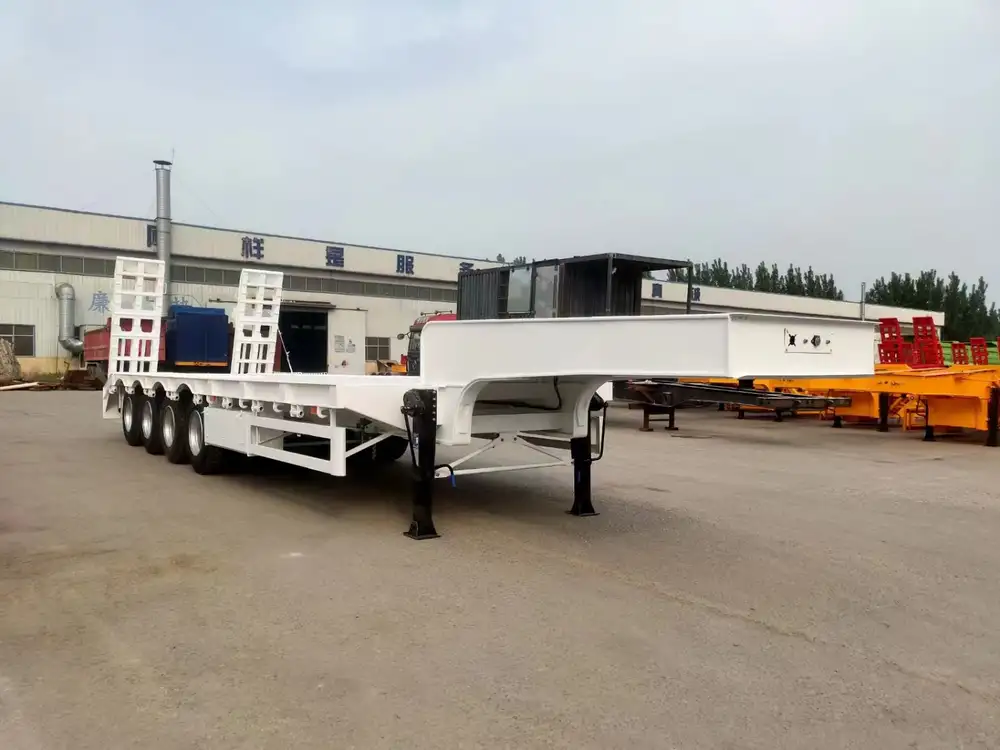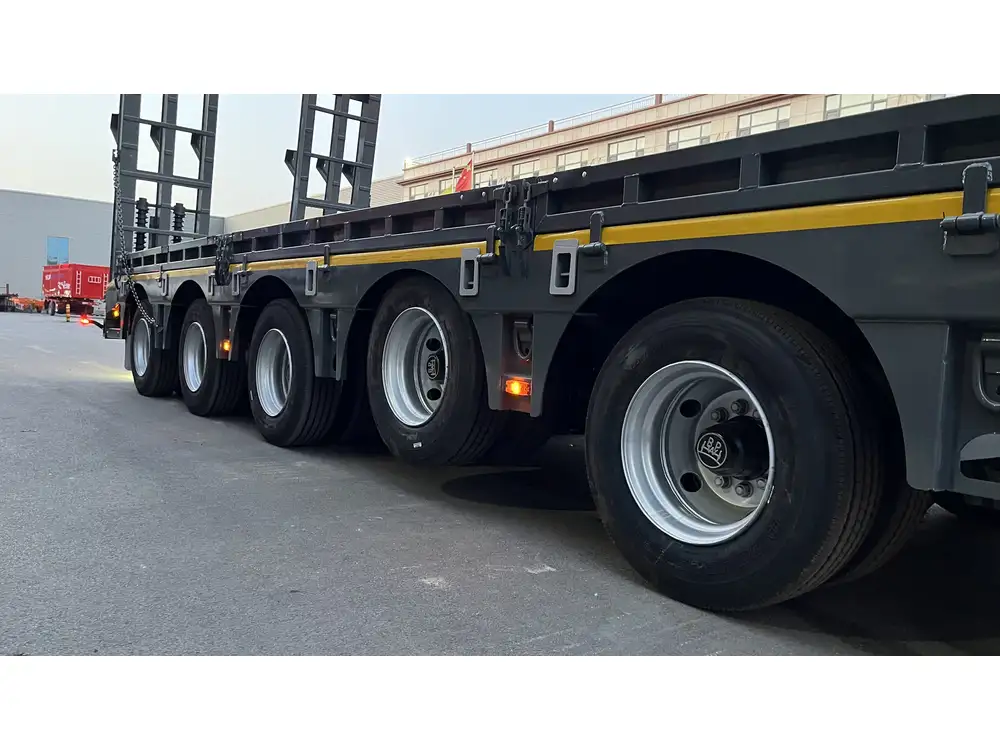Transporting dirt efficiently and safely on a flatbed trailer involves understanding the right techniques, equipment, and practices to ensure you meet your logistics needs. In this guide, we will delve into the multifaceted approach to effectively move dirt using flatbed trailers, addressing various considerations, best practices, and potential challenges that may arise.
Understanding Flatbed Trailers
Flatbed trailers are renowned for their versatility, allowing for the transportation of various types of cargo, including dirt. Their open design permits heavier and bulkier loads while facilitating easier loading and unloading. Here, we explore the different types of flatbed trailers suitable for transport.
| Flatbed Trailer Type | Features | Best Use Cases |
|---|---|---|
| Standard Flatbed | No sides or roof, typically lower to the ground | Ideal for transporting bulk materials like dirt, gravel, and heavy equipment |
| Step Deck | Two levels, with a lower deck height | Suitable for taller loads that require a lower center of gravity |
| Drop Deck | Similar to step deck but has a flat surface downwards | Provides additional height clearance for oversized cargo |
Safety Considerations When Transporting Dirt
Safety is paramount when transporting dirt on a flatbed trailer. Here are essential safety measures to consider:
Load Securement: Use proper tie-downs, including ratchet straps and chains, to ensure the dirt doesn’t shift during transit. The recommended securement should be sufficient to withstand imposed forces during travel.
Weight Distribution: Proper weight distribution is crucial to maintain vehicle stability. Ensure that the load is evenly distributed across the trailer to prevent swaying or tipping.
Trailer Ratings: Always check your trailer’s gross vehicle weight rating (GVWR) and ensure it can handle the combined weight of the trailer and the dirt being transported.
Weather Conditions: Be mindful of weather conditions that could impact transport. Heavy rains may cause mudslides, while dry and windy conditions may lead to dust control challenges.

Preparing to Load Dirt
Before loading dirt onto your flatbed trailer, you need to prepare adequately. Here’s how to prepare for a successful loading process.
Required Equipment
A range of equipment can assist during the loading and transport of dirt:
- Excavators or Loaders: Utilize these to scoop dirt effectively and place it on the trailer.
- Wheelbarrows: Ideal for smaller amounts of dirt, particularly in residential areas.
- Shovels and Rakes: Necessary for minor adjustments and to ensure dirt coverage.
Loading Process Steps
Site Assessment: Survey the site where the dirt is being sourced to ensure stability and accessibility for loading equipment.
Choose the Right Time: Perform the loading during dry periods. Avoid loading when the ground is saturated to minimize soil disturbance and potential aviation problems.
Create a Slope: When loading, create a gradual slope to facilitate dirt transfer onto the flatbed. This minimizes spillage and allows for efficient tearing.
Monitor Load Limit: While loading, regularly check the weight of the dirt to ensure you remain within safe limits.

Strategies for Effective Transport
The transport phase is as critical as the loading process. Implement these strategies to ensure effective and safe transport.
Route Planning
Before heading out, plan your route meticulously:
- Road Conditions: Avoid roads that are under construction or poorly maintained, as they may pose hazards.
- Residences and Businesses: Use detours where possible to minimize impact on local traffic and avoid potential disputes with property owners.
Monitoring and Adjustments
During transit, remain vigilant about your load:
- Regular Checks: Stop periodically to check the integrity of your load and the trailer.
- Adjust Securements: Be prepared to adjust tie-downs if you notice any shifting.

Speed and Driving Techniques
Adopt safe driving practices:
- Moderate Speed: Lower speeds allow for better control and a reduced risk of tipping.
- Steering and Braking: Take turns wider and brake gently to avoid sudden moves that can disrupt the load.
Unloading Dirt Safely
Upon arrival at your destination, it’s crucial to unload the dirt safely and efficiently. Follow these protocols:
Choosing the Right Unloading Method
Gravity Dumping: Depending on the trailer design, you may slide the dirt off by tilting the trailer using pneumatic or hydraulic systems. This is ideal for large volumes of dirt.
Controlled Flow: If gravity dumping is not an option, utilize a loader or excavator to carefully remove the dirt in controlled amounts.

Post-Unloading Procedures
- Site Restoration: Make sure to restore and clean up the unloading area to prevent unnecessary damage to the site.
- Inspections: After unloading, inspect the trailer to ensure no dirt has lodged in crevices, potentially affecting future loads.
Common Challenges and Solutions
Despite meticulous planning, challenges may arise. Here we outline some common issues and effective solutions.
Spillage and Erosion
Problem: Over time, dirt can spill during transit, causing environmental issues or unsafe road conditions.
Solution: Utilize tarps or mesh covers that can help contain dirt during transport, particularly on windy days.

Dust Control
Problem: Dust created by transporting dirt can affect drivers and residents, requiring effective containment measures.
Solution: Use a water spray mechanism to moisten the dirt slightly before transport, thus reducing dust emissions during the journey.
Compliance with Regulations
Problem: Local laws and regulations might affect how dirt is loaded, transported, and unloaded.
Solution: Research and understand local DOT rules and zoning laws to ensure compliance, avoiding fines or legal ramifications.
Conclusion: Best Practices for Efficient Dirt Transport
Transporting dirt on a flatbed trailer is a multifaceted task requiring careful consideration of various factors. Through proper planning, execution, and adherence to safety and environmental regulations, we can streamline operations. Below is a quick recap of best practices:
- Always assess load weight and distribution for optimal safety.
- Utilize appropriate equipment for loading and unloading operations.
- Regularly monitor your load during transport.
- Implement dust control measures and ensure compliance with local regulations.
By following these guidelines, we can optimize our dirt transport endeavors, reducing potential disruptions while enhancing overall efficiency. Employing strategic planning and robust execution sets the groundwork for successful logistical operations that meet both project needs and environmental standards.



